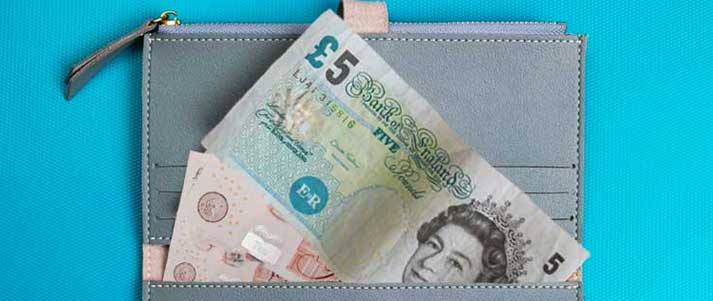Guide to Child Trust Funds 2025
Think you might have a Child Trust Fund? Don't let the money go unclaimed. We reveal how to find your account and access the savings.

Credit: Krakenimages.com – Shutterstock
If you've not yet checked whether you have a Child Trust Fund (CTF), you could be missing out.
In a 2023 report by the House of Commons, it was estimated that over £1.7 billion is yet unclaimed in Child Trust Funds.
For a period spanning over eight years, HMRC gave out vouchers to parents and guardians to get CTFs started. If you were born within that period, you could have hundreds (or even thousands) of pounds waiting for you.
What is a Child Trust Fund?
Child Trust Funds are tax-free savings accounts for people who were born in the UK between 1st September 2002 and 2nd January 2011.
Although the scheme ended in 2011, any accounts that had already been set up by then will remain open until they 'mature' (when the child turns 18 and can access the money).
The average amount of money in Child Trust Funds is reportedly £2,200.
Even if your parents haven't been paying money into your CTF, don't automatically assume it will be empty.
If you were born while the scheme was running, HMRC will have sent your parents or guardians a £250 voucher, or £500 for those on a low income, to get the account started. Until 31st July 2010, they sent another £250 or £500 voucher when you turned seven. Overall, this meant £2 billion from the government was put into CTFs for over six million children.
Up to £9,000 can be added to the account each year, with that limit refreshing at each of your birthdays throughout childhood. And it's not just your immediate family that can pay money into it – anyone can.
You have the option to take control of the CTF from the age of 16. If you choose to do so, it will be you, rather than your parents/guardians, who can decide whether to switch providers or transfer it to a Junior ISA.
And, from your 18th birthday onwards, you'll have access to the money (more on this below).
There are 3 types of Child Trust Fund
These are the different types of Child Trust Funds in the UK:
- Cash Child Trust Fund – Deposits can be made into the account and earn tax-free interest in a similar way to cash ISAs.
- Stakeholder Child Trust Fund – Savings can be put into a range of stock market investments. Rules are in place, including that funds should be diverse, and not too focused on high-risk investments. There's also a max annual charge of 1.5% of the account's value.
- Shares-based Child Trust Fund – Parents/guardians are able to choose how the savings get invested in the stock market.
How to find your Child Trust Fund

Credit: Yevgen Kravchenko, kamui29, Bell Photography 423 – Shutterstock
Do you know which provider your Child Trust Fund is with? If so, great! Get in touch with them and they should be able to locate the account for you.
However, if you don't know the account provider, all is not lost. As long as you're over 16, you can ask HMRC to find your CTF (under 16s will need their parents or guardians to contact HMRC).
You can do this online by logging into the Government Gateway and filling out an online form. The first time you log in, you should get a user ID and password, so don't worry if you haven't got these details yet.
Once you've logged in and accessed the form, you'll be asked for your National Insurance number so make sure you've got it to hand.
It's also possible to ask HMRC to find your Child Trust Fund by post. In the letter, include your:
- Full name
- Address
- Date of birth
- National Insurance number
- Adoption details (if applicable).
You should expect to hear back from HMRC within three weeks.
How to access money in your Child Trust Fund
On your 18th birthday, you automatically take over the Child Trust Fund (if you haven't already done so at 16). At this point, no more money can be added and it's up to you to decide what happens to the savings.
Here are your options for what to do with your matured Child Trust Fund:
-
Find out the current status of your account
When your Child Trust Fund matures, it will be kept in a 'protected' account until you get in touch with the provider. No one else will be able to access the account.
The money may automatically get moved to an adult Individual Savings Account (ISA), in which case it will continue to earn tax-free interest on the savings.
You may choose to stay with the current provider. However, it's still worth researching your other options to make sure you're getting the best deal.
-
Move the savings to a new ISA account
There's a range of ISAs on the market, so even if your matured CTF is moved to an adult ISA by the same provider, this isn't necessarily going to be the best option for your money.
If you're interested in moving the money to a new ISA account, consider whether you would like a cash ISA or a stocks and shares ISA. Here's a brief overview of each type of account:
- Cash ISAs – These can either be easy access or fixed-rate accounts. If you want to dip into the money as and when you need it, an easy-access cash ISA could potentially suit you better. But, if you're able to put the money away for a set period of time, you might get higher interest rates with a fixed-rate account. To find out more, see our comparison of the best cash ISAs.
- Stocks and shares ISAs – As their name suggests, these invest the savings in the stock market. While this might lead to larger gains than a cash ISA, there's also the risk that you could lose money if the value of the investments goes down.
In the current tax year (which runs from April to April), you're able to save up to £20,000 in these types of ISAs. That allowance can either apply to the money you're saving in one account, or it can be split across multiple ISAs.
-
Transfer the money to a standard savings account
Although you can find some good deals on ISA accounts, you might find you can actually get higher interest rates by choosing a standard savings account.
Take your time to look into all of the options available to you.
In a similar way to choosing a cash ISA, decide whether you would benefit more from having an easy-access savings account or a fixed-rate one.
Once you've decided which type of account best suits you, research the interest rates offered by each bank to see which one will help your money grow the fastest. To help you get started, we have a guide that compares the top savings accounts.
-
Open a Lifetime ISA
A Lifetime ISA (LISA) is a type of savings account that's focused on helping you save up for a house or retirement.
While cash ISAs and stocks and shares ISAs have an annual allowance of £20,000, you can only pay up to £4,000 per year into a LISA.
However, there's a big advantage to saving money in a LISA: the government gives you a 25% bonus on anything you save up to £4,000 each tax year. This means you can get up to £1,000 per year in free money.
There are terms and conditions to be aware of. For example, you can only withdraw the money if you're buying a house, if you're 60 or over or if you're terminally ill with less than 12 months to live. If you withdraw the money for any other reason, you'll be charged a 25% fee.
You also can't make deposits into the account from the age of 50 onwards.
Head over to our full guide to Lifetime ISAs to find out more and compare offers.
-
Withdraw the savings
If you feel that you need the money immediately to cover your living costs, there's also the option to withdraw the savings from your Child Trust Fund. With the average account sitting at around £2,000, this could go a long way to help you get by during university.
However, keep in mind that if you feel able to transfer the money into a different savings account, this will allow the money to keep growing.
Due to inflation, the money could effectively lose value over the course of a year if no interest is added to it.
But, as we mentioned, if you're in need of money for short-term spending, you might find that withdrawing the savings into your current account will make a big difference.
Ultimately, it is up to you to decide how to use the money. Whichever option you choose, make sure your Child Trust Fund doesn't go unclaimed!
Looking for more ways to boost your bank balance? See our guide to making money quickly.








